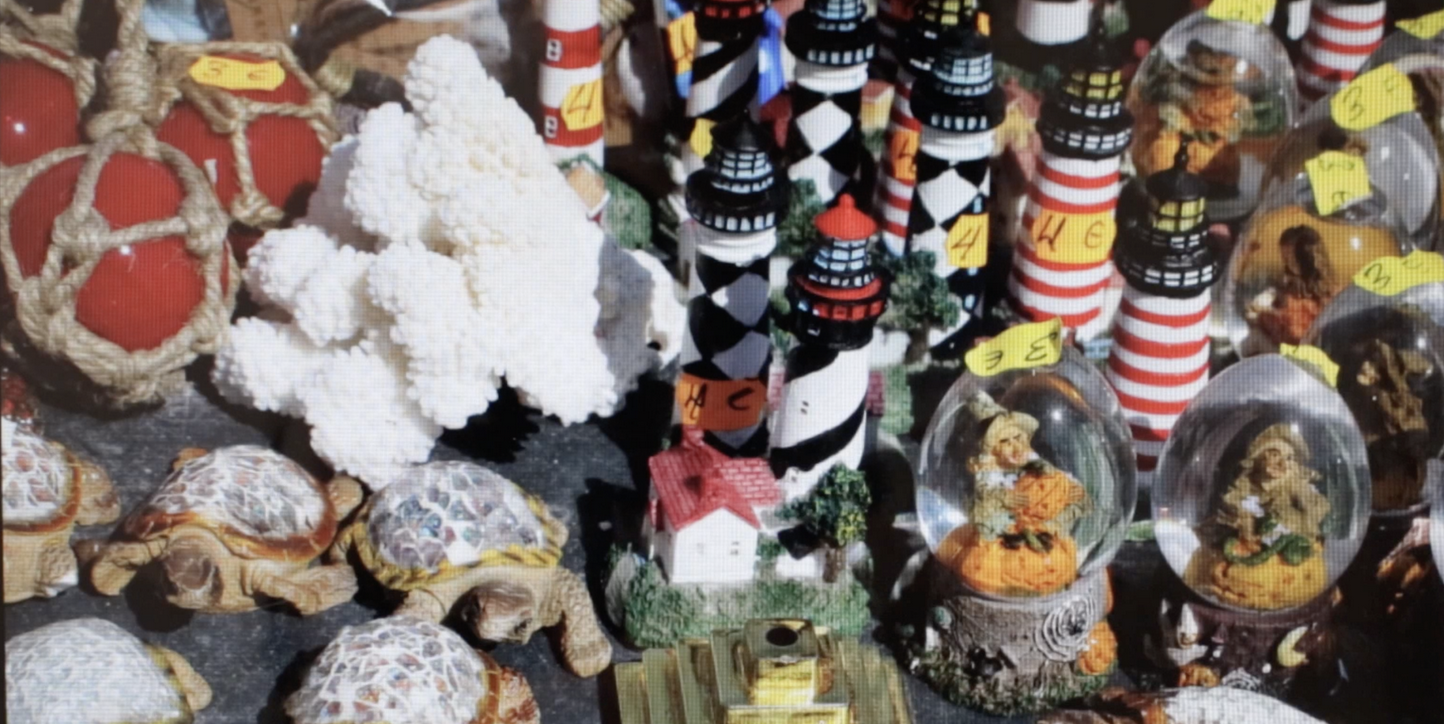Sala Abierta [Open Gallery] 04 – Patricia Esquivias
Folklore III, 2015
Video 17’26”
June 6 – 25, 2020
Sala Abierta, an intangible space that in its first phase will present the work of artists who live and work in Guadalajara.
Folklore III establishes a connection between Galicia and the colonial Mexican territory renamed ‘Nueva Galicia’ in the 16th century, particularly with present-day Guadalajara, where the artist lived for some time while collecting material for this piece.
The video is the fourth in the Folklore series, which gathers informative works on relatively important events that tend to remain in collective memory. Esquivias selects fragments of cultural residue to shape her videos, intertwining topics related to Spain and historical moments through irony, opinion, and personal memories. She improvises her commentary, speaks in sometimes hesitant English, and narrates from a rarely found perspective: the first person. These characteristics make her visual narrative unusual yet endearing, while maintaining a sharp critique of the city of Guadalajara. In this way, Esquivias constructs, in front of the camera, the microhistories of History—those that do not exist until they are invented.
1 The Kingdom of Nueva Galicia was composed of the Province of Nueva Galicia (or Xalisco), which includes present-day Jalisco, Nayarit, and Aguascalientes, and the Province of Los Zacatecas (Zacatecas). By 1786, the political divisions of New Spain were restructured into intendancies, merging the Province of Nueva Galicia and the Province of Colima into the Intendancy of Guadalajara, while the Province of Los Zacatecas became the Intendancy of Zacatecas.
In 2004, I took my first trip to Galicia, and in 2005 to Nueva Galicia. When I learned that it was Queen Joanna the Mad who decided to name Nueva Galicia, Nueva Galicia, I started thinking about how this might have influenced its destiny.
In 2009, I made the first Folklore, and now it is 2015, and I have just returned from Galicia. I am about to make the sixth or seventh version of Folklore III. In Galicia, there is a place called Finisterre, meaning the end of the land, where many people go to perform rituals—rituals that mark beginnings or endings in life, as it is also the end of the Camino de Santiago. It is as if walking through geography psychologically facilitates marking ends or beginnings.
Queen Joanna had a very promising future, but her life turned into a long misfortune. She too undertook one of these walks: when her husband died, she decided to accompany his body to his chosen burial site. The journey lasted eight months, and she was newly pregnant with his child. At the end of the journey, she buried him and gave birth—an exemplary case of a geographical/psychological walk.
Finisterre, meaning the end of the land, is somewhat like Galicia itself. For a long time, Galicia was considered the end of Spain—neglected and forgotten—forcing its people to emigrate in search of opportunities. Many images in magazines and newspapers depict this. Here is a traditional Galician instrument, and in my first visit in 2004, I found this house façade decorated with tiles illustrating scenes of departure and migration—grandparents with their grandchildren, a girl by the sea—images of longing.
Beyond these visual testimonies, Galician architecture also reflects migration stories. Many houses have a specific shape due to a clause in their purchase contracts: if things go well, the owner has the right to add a second floor. This clause is called derecho de vuelo (right to build upward), resulting in houses with upper floors larger than their ground levels—mushroom-like homes indicating past prosperity. These houses are well built, childishly colorful, and hopeful to look at when driving through the region.
I thought that when Queen Joanna named the Mexican region Nueva Galicia, she was metaphorically granting Galicia a derecho de vuelo, giving it an enormous second floor—a new land of opportunities for prosperity. However, one might also feel strange moving to a place that shares the name of one’s homeland, but with new attached—especially knowing Queen Joanna’s tragic fate. Being the new version of something is never easy.
At one point, things seemed to be going well in Nueva Galicia. The capital had a beautiful airport with direct flights to Paris and New York—elegance arrived from those places. The city was orderly, beautiful, clean. But this did not last long; things started to unravel and appear neglected.
In 2009, while in Finisterre, I came across souvenir tables—Galicians are quite superstitious, or at least many myths surround them. Among the trinkets, I found a tiny golden pyramid. It seemed to confirm the connection between Galicia and Nueva Galicia. Years later, I discovered that in that same year, 2009, in Nueva Galicia, another pyramid appeared. A religious leader who enjoyed grand birthday celebrations built themed sets each year, and in 2009, he constructed this Mayan pyramid. In other years, he built Russian and Chinese-inspired settings.
This spectacle contrasts starkly with the small, solid golden pyramid I found in Galicia. Galicia’s constructions inspire trust—they are built to last. But in Nueva Galicia, one never knows if things will endure or be maintained.
For example, the same religious leader built a circular pyramid temple at the end of a street. Initially, the street was narrower, but he wanted it widened for better visibility. He demolished parts of buildings and rebuilt them with pyramid-like façades. However, about ten years later, he decided the street still wasn’t wide enough, so he gathered followers to demolish the pyramid façades. The area surrounding the temple is named Hermosa Provincia, but just before it lies a neighborhood called Progreso (Progress). It seems to suggest that progress is just another place to pass through—leading to more of the same, or to the unknown. In this place, one never truly knows.

Born in Caracas and raised in Madrid, where she currently resides. She studied art in London and San Francisco. In Madrid, she co-managed the exhibition program Los 29 enchufes alongside Manuela Moscoso for four years. She has been working with video since 2005 and has exhibited her works in Spain (Museo Nacional Centro de Arte Reina Sofía, Madrid; MARCO, Vigo); Germany (Frankfurter Kunstverein, 5th Berlin Biennale); Switzerland (Kunsthalle Winterthur); New York (White Columns, Murray Guy); Italy (Arcos Museum, Artissima); and the UK (East International, Royal College of Art). Her work is represented in Europe by Estrany-de la Mota Gallery in Barcelona.
